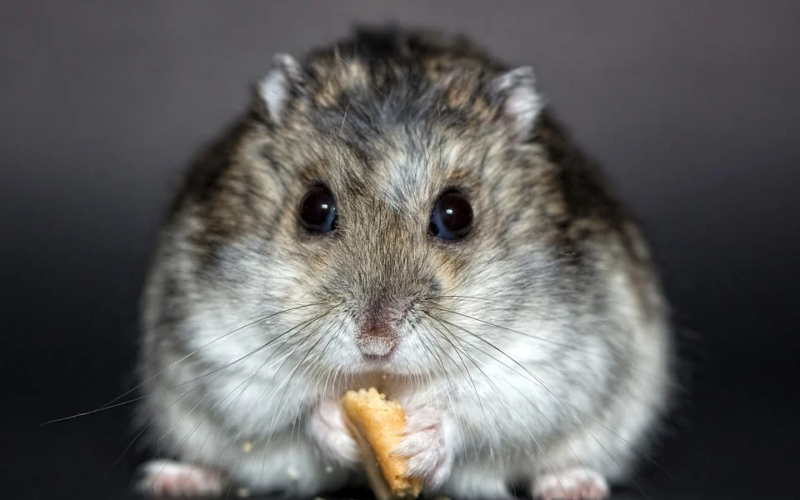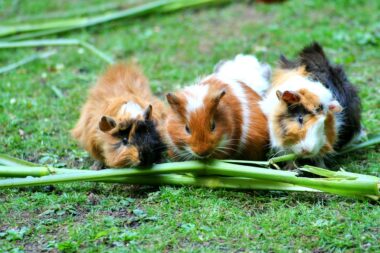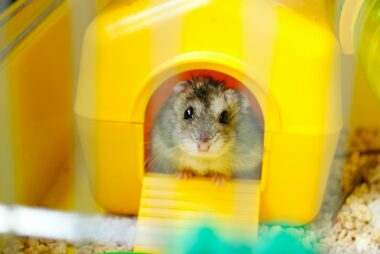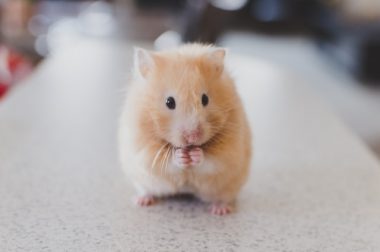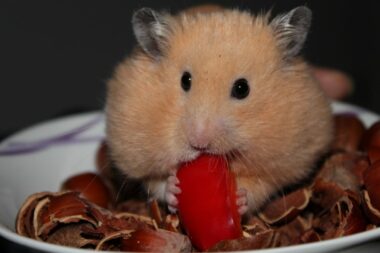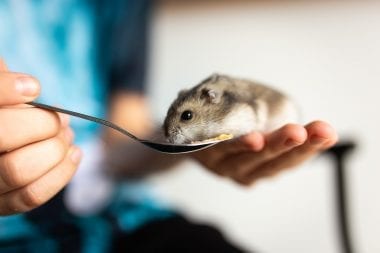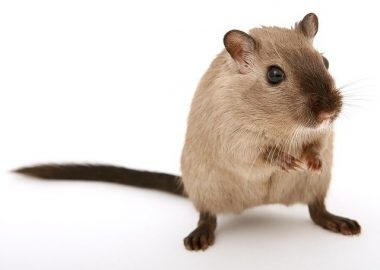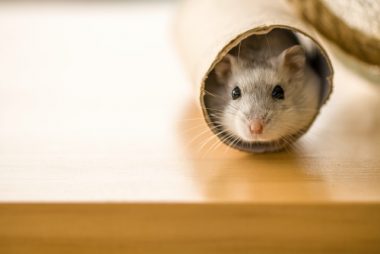Do you have a pet hamster? If so, you’re probably wondering how to keep it chipper and active. As a pet parent, you must ensure that your furry friend has everything it needs to live its best life.
To thrive well, your pet hamster will need ample space to run, hide, and exercise. In addition, it will need lots of toys for mental stimulation. A healthy and varied diet are also big requirements. Hamsters are loveable creatures, so you must be able to handle and interact with your pet.
Whether you are an experienced pet parent or new to the world of pet parenting, here are nine ways to keep your pet hamster active, happy, and healthy.
8 ways to keep your pet hamster healthy and active
1. Familiarize yourself with your pet.
Once you bring Molly the hamster home, spend some time observing its behavior. This will teach you about its mannerisms and personality. Like humans, every hamster has its own personality. Knowing what upsets or triggers certain behaviors in your pet hamster will help you respond to it appropriately.
Hamsters are reclusive and shy. Do not expect it to come running towards you immediately, if at all. You must respect its nature. For instance, if you want to pick up your pet hamster and it’s not in the mood, it will lower itself to the ground. Sometimes when you attempt to pick it up, it may flatten itself out. This is hamster talk for “please don’t pick me up right now”. If you hear squeaks, it might be anxious or agitated. This typically happens when the hamster is placed in a novel space. Give it time to adjust.
2. Offer a varied and nutritious diet.
What your pet hamster eats is as important as how much it eats. Hamsters love picking out the tasty bits first. For example, if they see sunflower seeds in their dish, it’s likely to disappear fast. After consuming the tastiest bits, it will go for the least tasty seeds. That’s why it’s important you offer a well-balanced diet to your pet hamster. Even if your pet loves seeds, it doesn’t mean that’s all it should eat.
Speaking of a varied diet, fruits and vegetables are very good for them. In fact, it makes great treats. The best fruits and veggies you can offer are those that they might find in the wild. Examples include:
- Carrots
- Broccoli
- Romaine lettuce
- Cucumber
- Spinach
- Pears
- Apples
- Lemons
- Limes
- Berries
Ensure these are washed well and cut up into small bite sized pieces before offering. Offer small amounts of food. Like other pets, hamsters do not have the concept of self-control! Apart from fresh veggies and fruits, introduce cereals and whole grain foods as well. Protein is an equally important aspect of a varied diet. Boiled and scrambled eggs make a superb treat. You can mix this in with its pellet and seed mix and as treats. Keep in mind, moderation and variety is key.
3. Choose comfortable bedding.
Select the best bedding materials for your pet hamster. Although wood shavings are a great option, avoid cedar shavings. The oil in the chips will lead to skin irritation. In addition, You must change your pet’s bedding on a regular basis. Ideally it should be changed three to four times a week. Once you toss out the old bedding, give the cage a thorough scrub with soap and water. Don’t forget to rinse the bottle and food dish as well. A clean and hygienic cage will ensure your fur ball doesn’t get sick.
4. Set up a spacious living environment.
Your pet hamster will appreciate an exciting and spacious living arrangement. Although it may seem as if it sleeps most of the time, hamsters are nocturnal. This means they are active when you are asleep. They run around, dig, and play at night. It needs room to exercise, run, and stay fit in its own special way. Plain (ink free) brown boxes, toilet paper/paper towel tubes, and similar items will suit its enclosure. It also gives them something new and exciting to chew on. Your pet will use different areas of its enclosure for different purposes. This is why a spacious cage is vital.
Vets recommend a minimum enclosure size of 12 inches (ca. 30 cm) by 12 inches (ca. 30 cm) by 18 inches (ca. 46 cm). However, the bigger the cage, the happier your pet hamster will be. What makes a good cage? Plastic molded cages, converted fish tanks, and wire cages are good home options. There are benefits and drawbacks to each type. For instance, a tank will need thorough cleaning while a wire cage offers more climbing opportunities. You must also keep in mind that hamsters love to chew. They will have a hard time chewing through wire but there’s no guarantee for plastic ages. Always keep a close eye on your hamster’s chewing habits. You want to avoid dealing with a runaway hamster.
In addition to the size of the cage, the base should be at least five centimeters deep. You must keep it covered with a safe nesting material such as a substrate or dust-free wood shavings. If you’re using a substrate, try to keep it at least six centimeters so that your pet hamster has ample space for digging.
Where is the best place to keep the cage? Avoid keeping it above or very close to a heater. It should not be placed in direct sunlight or in a dark basement either. Keep the cage on a table and away from reach of toddlers and other pets.
5. Offer plenty of toys.
Your pet hamster loves to play. As a result, it needs special toys to keep it occupied and stimulated. An effective hamster toy is the exercise wheel. They love running on it. However, you need to offer more stimuli to keep your pet happy. Here are some excellent toy options:
- Wooden toys that encourage them to chew. Always use wood that is safe for pets.
- Homemade toys such as ink-free cardboard boxes. Hamsters love to hide in them and chew them on occasion. They will also use it to burrow. Avoid cardboard boxes with glue or attached plastic bits. Always use plain cardboard.
- Empty paper towel and toilet paper rolls are great options as well.
6. Take care of hamster teeth.
Did you know your pet hamster’s teeth grow quickly like finger nails? In fact, they never stop growing. They are one of few animals who are born with all their teeth. To ensure their teeth do not over grow and cause pain, hamsters need to chew on something constantly. Hard items such as wooden treats and empty paper towel tubes are excellent options.
Dog biscuits are also effective at keeping your pet’s teeth in shape. They also provide necessary calcium. If your hamster looks like it has trouble eating, then you might need to visit the veterinarian. Only a certified vet can trim its teeth.
7. Give opportunities for exercise.
Hamsters never stop moving during the night. If they stop, they will experience digestive issues. Some may become overweight and face other health concerns. Apart from toys, every hamster cage must have a solid exercise wheel. You may notice your pet will run on it at night. Toys are another way to increase your pet’s physical activity. Hamster wheels are also effective when the cage size is small. When choosing a wheel, opt for a solid one rather than a mesh wheel. Your pet hamster might catch its foot in it and get injured. The wheel cannot be too small either. For example, if you notice your hamster is running with an arched back, the wheel might be small. Opt for wheels that are intended for rats. These have a larger diameter and make an excellent option for hamsters.
For additional physical exercise, you might also consider adding plastic tubing. Hamster balls encourage running for longer periods. You may safely place your pet hamster inside the ball and put it outside the cage. The time spent outside will be fun for your pet. However, never leave your pet unattended outside the cage. There may be potential dangers around such as small children and other pets.
8. Give your hamster company.
The moment you’re adopting your pet hamster, decide whether you want to give it company by adopting its friend. Hamsters are social creatures in the wild. They do well with other hamsters but only when it’s introduced to it at the start. If you plan to get an additional hamster, make sure they are of the same gender.
Are you doing everything to keep your pet hamster healthy and active?
Hamsters make great first time pets, especially for children. To ensure your pet hamster lives a long and content life, you must take certain measures. Spend time with your fur baby and offer it a balanced and nutritious diet. Create a spacious and comfortable living space with lots of toys and opportunities for exercise. Ensure its sleeping quarters are clean. If possible, ensure your pet hamster also has company with another hamster of the same sex.
